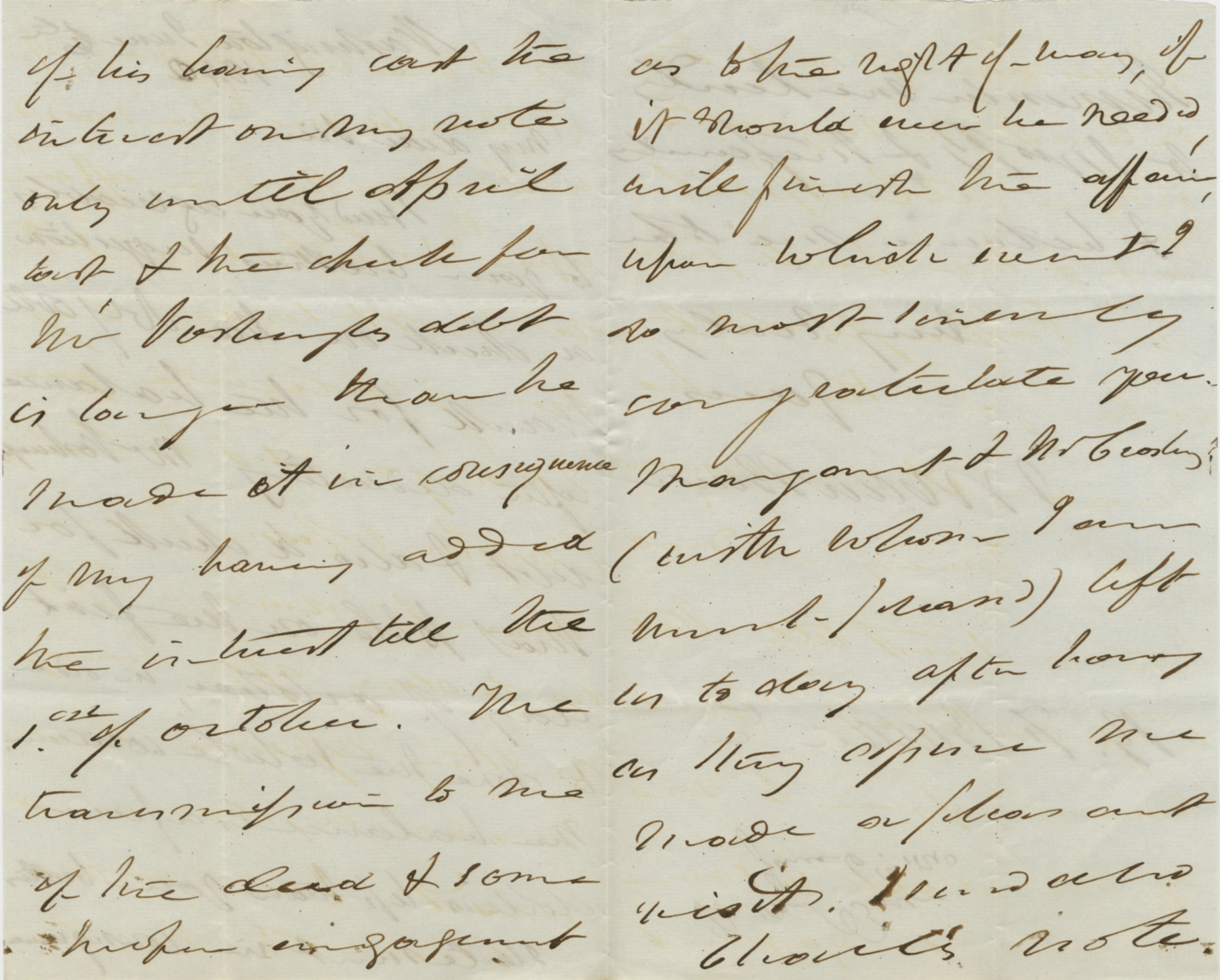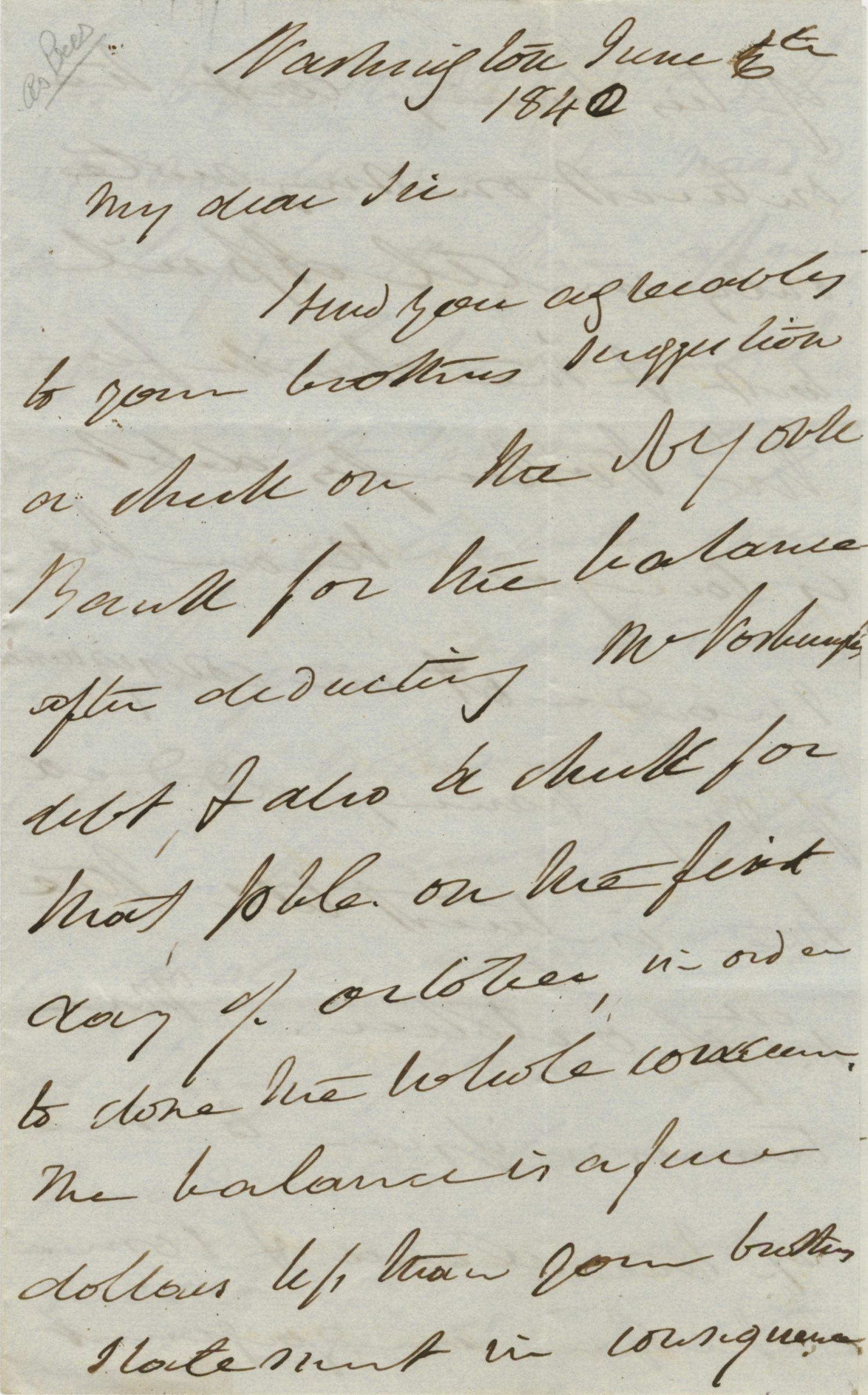President Martin Van Buren Completes the Purchase of His Estate, Lindenwald, Which He Thought to Use in His Retirement




Lindenwald is now the Martin Van Buren National Historic Site operated by the National Park Service
Writing to his representative in New York, former Attorney General Benjamin F. Butler, he exults: “The transmission to me of the deed and some proper engagement as to the right of way if it should ever be needed will finish the affair upon which I do most sincerely congratulate you.”
The Van...
Writing to his representative in New York, former Attorney General Benjamin F. Butler, he exults: “The transmission to me of the deed and some proper engagement as to the right of way if it should ever be needed will finish the affair upon which I do most sincerely congratulate you.”
The Van Buren family forebears were of Dutch ancestry, as was the case for most of the residents of Kinderhook, which was President Van Buren’s home town. Another local family was the Vosburghs. Many of these families intermarried; the grandmother of Van Buren’s wife Hannah was a Vosburgh. They also did business together, such as when Martin and Hannah Van Buren sold land to Peter Vosburgh. In Van Buren’s law practice, he often represented these local families, and that meant not infrequently working to get the Vosburghs out of trouble when they could not pay their debts.
Benjamin F. Butler father, a neighbor and supporter of Van Buren, successfully encouraged Van Buren to accept his son as a law clerk in his practice. The Van Burens took Benjamin into their home and family and he quickly earned their trust and acceptance. For four years he read the law under Van Buren’s mentorship. When Van Buren was elected Attorney General of New York, he moved his family and practice to Albany, including Butler, to whom he offered a partnership. Butler stayed with the family until his marriage to Henrietta Allen in 1815. The new couple found living arrangements across State Street from the practice, maintaining the close family relationship. As Van Buren became more deeply involved in politics, Butler managed the law office, was Martin’s confidant, and assisted in drafting positions, bills and speeches. When Van Buren took his seat in the US Senate, Butler remained active in local politics as the District Attorney for the city of Albany from 1821 to 1825 and as a New York Assemblyman in 1828. Andrew Jackson organized his second term cabinet with the advice of Van Buren, who was then Vice President, and Jackson named Butler Attorney General. He held the cabinet post from 1833 to 1838, a year into Van Buren’s Presidency. He then returned home to become United States Attorney for the Southern District of New York. Margaret was the daughter of Butler, and she married John Player Crosby. Van Buren always doted on her.
In 1839, Van Buren arranged to purchase Lindenwald, a 137 acre estate with a house of more than 30 rooms, only two miles from Kinderhook where he was born and raised, for use when he retired. Renominated by the Democrats in May 1840, he hoped to serve another term. When he lost the 1840 election, he returned to Lindenwald and took up the life of a gentleman farmer while continuing his political activities, and later, while writing his autobiography. He first planned for his return to the White House in the 1844 presidential election from Lindenwald, but that was not successful. Not until after the election of 1848 did the ex-president come back to his home in Kinderhook to the life of a gentleman farmer. Van Buren treasured his estate, Lindenwald, residing there for 21 years. In his own words, this is where he spent “the last and happiest years of my life, a farmer in my native town.” Decades after the President died, Lindenwald was owned for a time by Leonard Jerome, grandfather of Winston Churchill. It is now the Martin Van Buren National Historic Site operated by the National Park Service.
Autograph letter signed, as President, Washington, June 6, 1840, to B.F. Butler, who was representing him in New York, completing his purchase of Lindenwald. “I send you agreeable to your brother’s suggestion a check on the N. York Bank for the balance after deducting Mr. Vosburgh’s debt, and also a check for that payable on the first day of October in order to close the whole concern. The balance is a few dollars less than your brother’s statement in consequence of his bearing cost [of] the interest on my note only until April first, & the check for Mr. Vosburgh’s debt is larger than he made it in consequence of my having added the interest till the first of October. The transmission to me of the deed and some proper engagement as to the right of way if it should ever be needed will finish the affair upon which I do most sincerely congratulate you. Margaret & Mr. Crosby (with whom I am most friendly) left us today after having as they apprise me made a pleasant visit.” It is not known what relationship Vosburgh played in the transaction, but likely there was an offset of some kind. Van Buren’s asking for the deed and congratulating Butler on the success of the venture tell the story of this letter eloquently.
This is the first time we have carried a letter relating to the acquisition by a president of the home with which he is most associated.

Frame, Display, Preserve
Each frame is custom constructed, using only proper museum archival materials. This includes:The finest frames, tailored to match the document you have chosen. These can period style, antiqued, gilded, wood, etc. Fabric mats, including silk and satin, as well as museum mat board with hand painted bevels. Attachment of the document to the matting to ensure its protection. This "hinging" is done according to archival standards. Protective "glass," or Tru Vue Optium Acrylic glazing, which is shatter resistant, 99% UV protective, and anti-reflective. You benefit from our decades of experience in designing and creating beautiful, compelling, and protective framed historical documents.
Learn more about our Framing Services












































































































